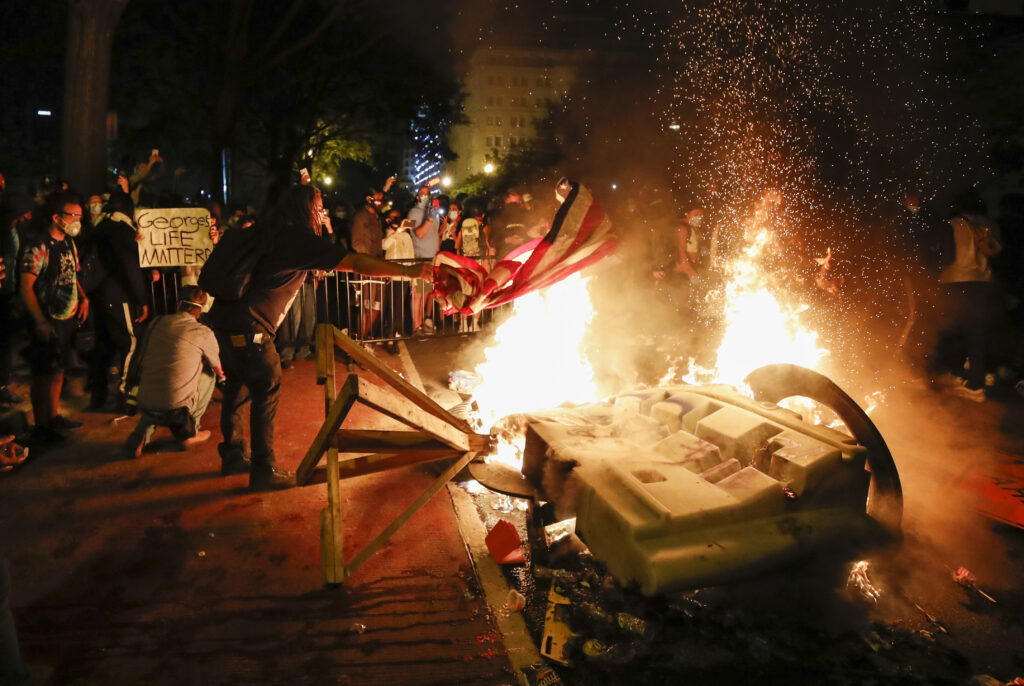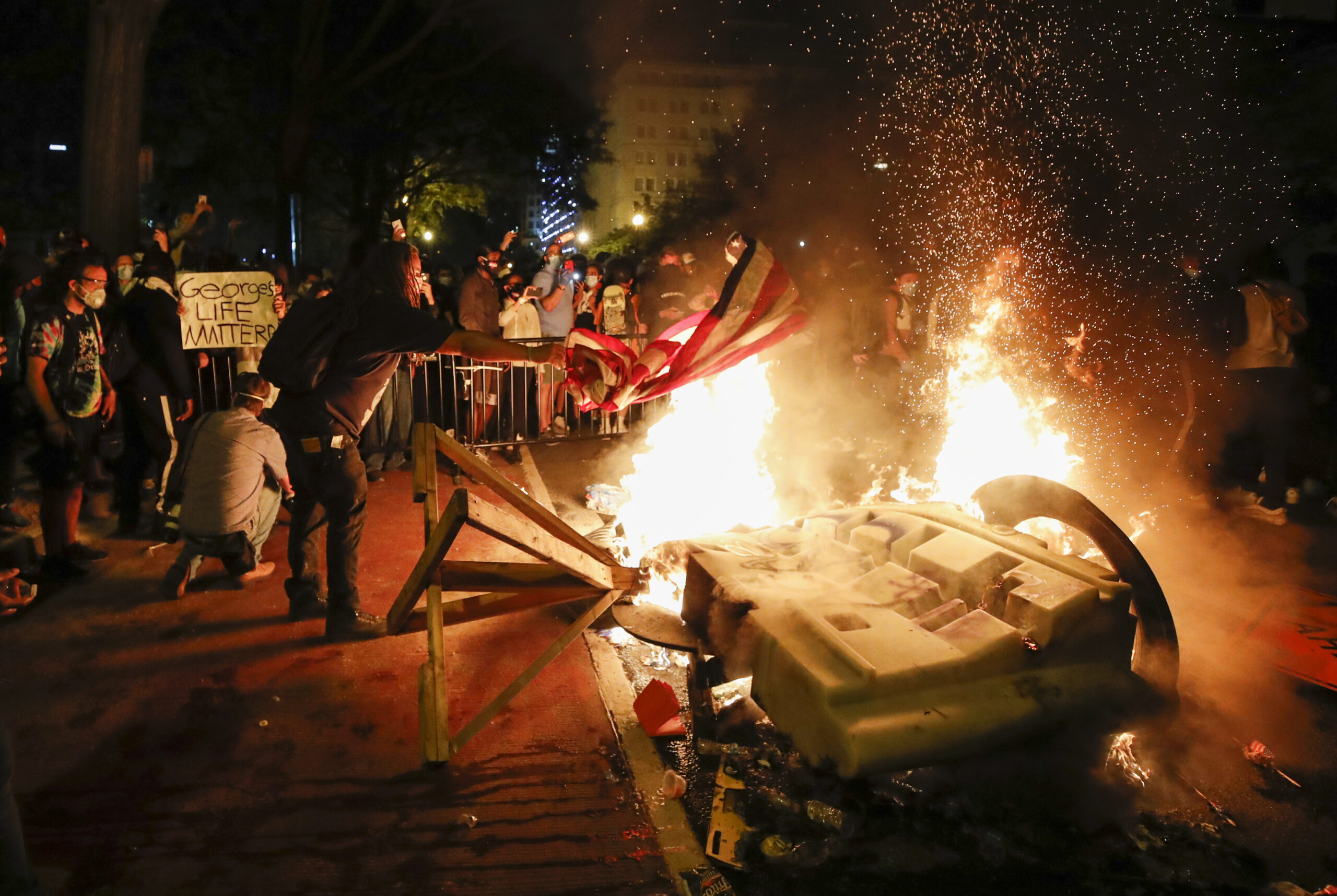A factor that is important to consider when thinking about protest success is violence. Do violent protests have negative implications for protest success? Do they limit a movement’s success or do they work? And if so, when do they work in favor of protesters?

Violence Erupts as Outrage Over George Floyd’s Death Spills Into a New Week, NPR.org
Do Violent Protests Yield Negative Outcomes?
According to research, in most cases violent protests have negative implications for the success of protesters and the goals that they aim to achieve. Research shows that the strategies that protesters use are critical to the success of their movement because these strategies determine how the issue at hand is being framed by the media. In his study, Omar Wasow discusses the idea of Agenda Seeding, which refers to the efforts that are made by activists to influence public opinion and policies through the use of the media. This study argues that nonviolent protests will help protesters by allowing the framing of their demands and efforts in a positive light, while violent protests would encourage the media to focus on the concerns of the dominant group, rather than protesters and their demands. Through the use of the black-led protests that took place in the 1960s and early 1970s, Wasow explores the impact of the violent protests that took place after the Assassination of Dr. Martin Luther King Jr. on vote shares for the Democratic Party in the 1968 presidential election. The article finds that violent protests decreased the Democratic vote share in the 1968 presidential election. The violent protests that took place following MLK Jr.’s assassination showed a decrease in voting support for the Democratic presidential candidate in 1968. In order to account for endogeneity, Wasow uses rainfall as an instrumental variable to predict violent protest activity. Rainfall was used because prior research found that rainfall decreases protest activity. While rainfall has an association with protest activity, it does not have any association with democratic vote shares. In the study, it was found that prior to the violent protests that took place as a result of MLK Jr.’s assassination, the relationship between rainfall and democratic vote share was not statistically significant. However, after violent protests took place, there was a significant negative shift in vote share. The findings in the article also established that, had the violent protests not taken place, the Democratic party would have won the 1968 presidential election. The implication here is that when protesting, violent protests do not yield positive outcomes when it comes to how their issues are framed in the media as well as vote shares.
The negative impacts of violence is also evident in another study that explores the Capitol Insurrection that took place following Donald Trump’s defeat in the presidential election and its impact on party identity. This article explores the impact of violent forms of protest on individuals’ affiliation with a party that those violent protests are associated with. The event that is explored to answer this question is the insurrection that took place at the U.S. Capitol in January of 2021. This study measures the impact of the insurrection on the identification with the Republican party through expressed partisanship on twitter by active social media users who are also at least minimally engaged in politics. The twitter bios of these individuals were tracked seven months prior to and two months after the insurrection took place to measure whether or not there was a change in the expressed partisanship of this population. The affiliation of social media users to a party was used through words that were on their twitter bios that were related to the terms “Democrat” and “Republican.” The study finds that after the insurrection took place, identification with the Republican party dramatically decreased. Prior to the insurrection, de-identification with a party between the Democrats and Republicans was similar. However, following the insurrection, the de-identification with the Republican party saw a significant increase. In addition, this de-identification was consistent in the short term, as most individuals who de-identified with the Republican party did not re-identify with it within the timeframe that the data was collected.
The implications of this research is that extreme violence that undermines democratic norms will discourage identification with a party and that there are limits to partisan loyalty. This shows that there are situations, one being the insurrection at the Capitol, in which partisanship can be wavered. This can be helpful for activists if they use events like these to call these violent actions to attention on a national or international level, and make it known.
When do Violent Protests Have Positive Outcomes?
There is a lot of research that emphasizes the destructiveness of violent protests and their counter-productivity in accomplishing the goals that protesters have. A study explores that claim by analyzing the Los Angeles Riots that took place in 1992. Through the analysis of referendum voting that took place regarding public schools and university education, the study measured whether or not the support for these two public goods changed by comparing the years 1990 and 1992. Public schools were chosen to measure the demands of protesters because prior research showed that public schools were more associated with racial minorities, while universities did not have that relation. The logic behind this is that the attitudes towards spending on public schools would be impacted by the fact that racial minorities are generally associated with them. The article also explored whether the change in support would be through the mechanism of mobilization or change in attitude towards the demands of protesters. This article finds that violent protests can increase policy support on a local level, as voting for spending on public schools increased in 1992 in comparison to spending on university education. The study shows that mobilization, especially among African Americans, was the mechanism that played a role in the increase in support for public school spending, rather than the change in attitude.
The implications of this research are that violent protests may result in positive outcomes on local levels, as those that are the closest in proximity may feel differently about these events than individuals on a national level. Riots also seem to promote political participation among people who share identities with protesters, as the support for policy increased as a result of more participation from the African American population.

Leave a Reply